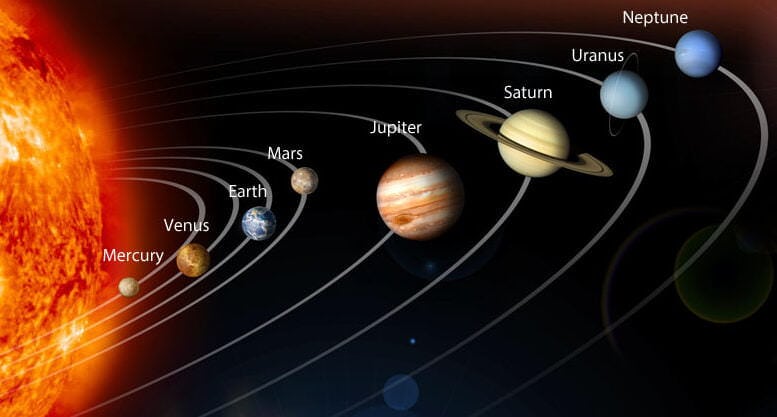During our time in school, we were introduced to the solar system. At the center of it all is the Sun, around which all the planets orbit. Initially, it was believed that there were nine planets, including Pluto. However, Pluto was later excluded from the list due to its smaller mass and gravitational field compared to the others. Each planet is unique and distinct from one another, varying in size, temperature, and state of matter.
We all learned the answer to the question, “What is the name of the largest planet in the solar system?” in school. The title goes to Jupiter, which is named after the powerful god of thunder. Not only does it surpass the other planets in size, but also in mass. It’s important to note that while Jupiter is the largest planet in the solar system, it is not the largest planet in the entire universe.
Characteristics
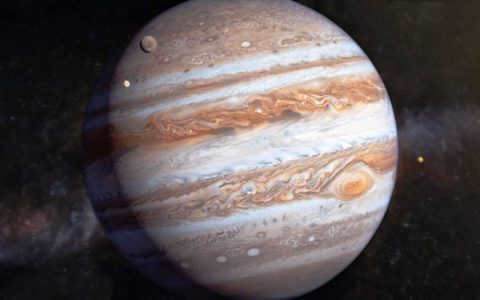
About four hundred years ago, when telescopes were invented, the discovery of this planet began. It is a gas giant surrounded by large clouds, mysterious circular spots, and satellites.
Not only is it the biggest planet in our solar system, but it is also the most massive planet orbiting the Sun.
The magnitude of this planet is impressive. If we compare the mass, area, and volume of Jupiter to other planets in the solar system, it holds the top position. It has been recognized since ancient times and has been observed by various cultures.
When it comes to its dimensions, they are truly gigantic:
- The mass of the largest planet in the solar system is 1.8891 x 1072 kg, with a volume of 1.43218 x 1051 km³.
- It has a surface area of 6.1491 x 1010 km².
- The approximate circumference of this planet is 4.39624 x 105 kilometers.
To put it in perspective, imagine planet Earth and scale it up 2.5 times to get an idea of the size of the largest planet in the solar system.
Interesting fact: This giant planet is predominantly composed of gas and dust, with a density of up to 1.326 g/cm³, making it the least dense planet.
It’s important to note that there is ongoing debate about the composition of the core of this massive planet.
Jupiter is located at a considerable distance of 778 million kilometers from the Sun, making it the 5th planet in terms of distance. It is classified as a gas giant, similar in composition to the Sun. Its atmosphere is mostly made up of hydrogen.
However, one remarkable characteristic is that beneath the atmospheric layer, the planet is enclosed by an ocean. It should not be mistaken for Earth’s water ocean, as the water composition there consists of rarefied boiling hydrogen under immense pressure. The rapid rotation around its axis generates an elongation along Jupiter’s equator, giving rise to powerful winds.
This creates the uniquely stunning appearance of Jupiter: elongated clouds in the atmosphere form vibrant ribbons of different lengths and widths. Additionally, there are vortexes within the clouds – atmospheric formations. Some of these formations have been around for approximately three hundred years and have grown to immense sizes. For instance, there is a formation known as the Great Red Spot, which is several times larger than our planet Earth.
That’s fascinating! Explaining the concept of entropy in simple terms.
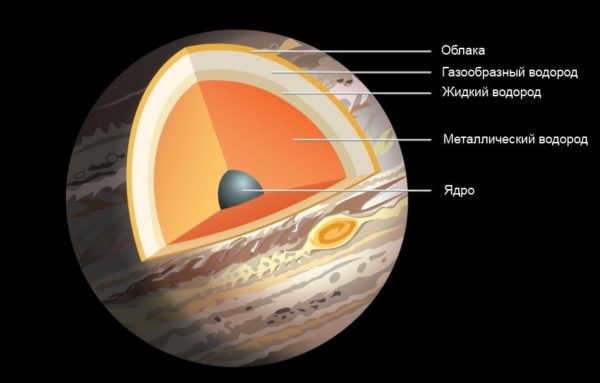
Magnetic Field
Scientists have discovered that Jupiter’s magnetic field is incredibly extensive, spanning approximately 650 million kilometers. This surpasses the size of the planet itself and even extends into the orbits of neighboring planets, such as Saturn.
Here’s something interesting! The magnetic field attracts a remarkable number of satellites to the planet, currently totaling 28.
The largest of these satellites is Ganymede. This particular satellite has garnered significant attention from scientists, with a multitude of conflicting statements only further fueling scientific interest in Ganymede. Its surface resembles ice, adorned with streaks and cracks whose origin remains unknown.
- The hypothesis suggests the existence of subglacial liquid water pockets where primitive life could potentially thrive.
- The satellite lacks any signs of life and is unsuitable for supporting primitive organisms.
This is an extremely rare occurrence, as only a few locations within our solar system can be considered habitable. Future expeditions are planned to be equipped with drilling equipment to settle these debates. The composition of the water will be examined, providing insight into the potential habitability of this site.
According to the theory, the Sun and all planets originated from a massive explosion of a gas and dust cloud in the universe. Jupiter, for instance, formed from approximately two-thirds of this cloud, although it lacked sufficient material to develop a central core.
The surface of Jupiter, heated by the Sun, has a temperature of 100º and receives 40º of heat from its own internal source. The atmospheric layer of Jupiter is composed of 89% hydrogen and 11% helium, which closely resembles the composition of the Sun. The presence of sulfur and phosphorus on the surface leads to a chemical reaction that gives Jupiter its distinctive orange color. However, for humans, such a surface would be extremely hazardous due to the presence of acetylene and ammonia.
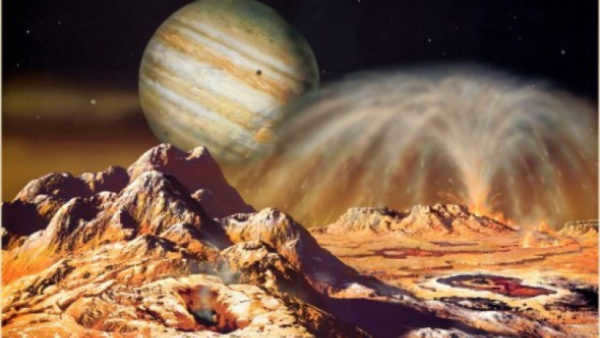
Investigation
If you look through a telescope, you can observe three rings encircling the planet. Although they are not as impressive as Saturn’s rings, they still possess a certain beauty. The existence of these rings was proven by scientists in 1979 with the help of the Voyager 1 spacecraft. The most notable and remarkable feature of Jupiter is the massive vortices located below its equator. These vortices are incredibly large and are often referred to as the “Great Red Spot”. They were first discovered in 1664 and are still active today.
Jupiter is no stranger to natural phenomena:
Research has been ongoing for centuries and remains unfinished to this day. There is still a vast amount of exploration and investigation yet to be conducted. There is even the potential to uncover the existence of life on this celestial body within our solar system. However, current scientific consensus suggests that this is unlikely. Ammonia and acetylene have limited utility for supporting living organisms, so the likelihood of finding life there is minimal.
This is a captivating subject! Could you provide an explanation of the reference frames in physics and what they entail?
Interesting video: the biggest planet in the solar system
Moons
On our planet Earth, we sometimes have the opportunity to witness the mesmerizing beauty of the northern lights and other wonders. However, on the colossal giant of our solar system, these phenomena occur more frequently and on a much grander scale. This part of the universe is no stranger to enchanting light shows.
This is made possible due to several factors:
- The radiation is significantly more intense compared to that of Earth;
- It possesses a vast magnetic field;
- There are copious amounts of volcanic material, particularly on the moon Io.
Unlike Earth, Jupiter boasts a staggering number of approximately 63 moons, each with its own unique characteristics:
- Ganymede holds the title for being the largest moon in terms of size.
- Io is home to the largest and most active volcano in our entire solar system.
- Scientists speculate that Callisto may harbor an underground ocean, containing remnants of ancient matter.
Interesting video: Discovering Jupiter’s moons
Close companions in our solar system
It is fascinating to explore the wonders of Jupiter, a truly captivating planet. However, let’s not forget about its neighboring “siblings” within our solar system. Taking the second spot in terms of size is Saturn, renowned for its magnificent rings. While all gas giants possess such formations, Saturn’s rings are particularly remarkable and instantly recognizable due to their impressive magnitude.
The composition of these rings is quite diverse:
Similar to Jupiter, Saturn itself is primarily composed of:
- hydrogen;
- methane compounds;
- various impurities;
- toxic ammonia.
However, due to the more powerful storm winds, the chances of stable formations on Saturn are nonexistent.

Following the biggest planet, we have Uranus and Neptune. These two are classified as ice giants. Unlike their larger counterparts, they do not contain metallic hydrogen compounds in their cores. Uranus is known for its unique axial tilt, causing the Sun to illuminate its poles rather than its equator.
Neptune is known for its incredibly strong winds and its surface has been compared to the Great Red Spot, which is referred to as the “Great Dark Spot”.
Saturn, along with Uranus and Neptune, possesses distinctive qualities and engrossing phenomena, rendering them truly exceptional planets. However, despite their immense size, even including Jupiter, these celestial bodies remain infinitesimally minuscule when compared to the vast expanse of the Solar System. The exploration of every nook and cranny is an insurmountable task, with countless scientific breakthroughs, enhancements to existing theories, and elucidations awaiting discovery.
Summary
After an extensive investigation, we can confidently assert that the largest planet in our solar system is undoubtedly Jupiter.
This information has been sourced from the esteemed Academy of Intelligence Development – SMARTUM.
The universe is a vast expanse with no discernible beginning or end. Despite the passage of countless years, it remains largely uncharted territory for scientific exploration. While scientists diligently study the Universe, Galaxy, and Cosmos, they also devote attention to our own solar system. However, the solar system’s intricate structure presents a formidable challenge for researchers. Despite its grandeur, the solar system is but a minuscule entity within the vastness of the Galaxy. The origins of the solar system and its constituent planets continue to elicit various theories and conjectures.
There is a great deal of curiosity surrounding the appearance and location of the largest celestial body. To find the answer, let’s explore the composition of the solar system, the number of bodies it contains, and their respective sizes.
The Galactic Planets
The celestial bodies known as planets are typically gas giants that orbit around a star.
Prior to the discovery of telescopes, these bodies were regarded as celestial wanderers, hence the name “planet,” which translates from Greek to “wanderer” in Russian.
In ancient times, there were not just 8 designated planets, but 9.
However, in 1990, Pluto was no longer considered a planet due to its small size.
The Sun is like a beating heart, originating approximately 5 billion years ago. From a scientific perspective, this event occurred when a cloud of gaseous dust was compacted by the force of gravity.
In numerous religious beliefs, the Sun is revered as a godly entity, and rightfully so, as it serves as the primary provider of warmth and illumination.
Within our celestial System, there are both inner and outer planets, accompanied by the presence of asteroids.
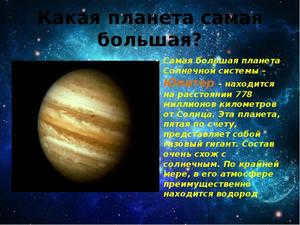
Every planet possesses its own distinct characteristics. For instance, Mercury, being the planet closest to the Sun, not only holds this distinction in terms of distance but also revolves at a significantly higher speed than its counterparts. Meanwhile, Venus stands out as the hottest planet, boasting an astonishing temperature of 400 degrees.
Out of all the planets, Earth is the only one where the existence of life has been unequivocally proven. Moreover, the moon serves as Earth’s satellite.
On the outer fringes of the Galaxy, one can find a plethora of massive celestial bodies. Due to their considerable distance from the Sun, these areas are characterized by extreme coldness, with icy winds prevailing.
Uranus and Neptune are commonly referred to as icy celestial bodies and are often identified as ice giants.
Jupiter is the biggest planet in our solar system.
Scientists have been fascinated by the largest celestial body in our solar system for over 40 years. Back in 1970, a total of 8 spacecraft were sent to explore the surface of Jupiter.
The spacecraft involved in this groundbreaking study were:
- Voyagers
- Galileo
- Pioneers
- National Aeronautics and Space Administration
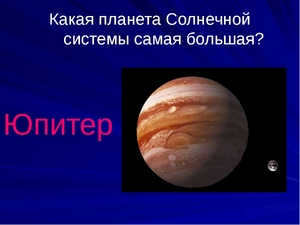
Jupiter is approximately 300 times more massive than Earth. Furthermore, Jupiter possesses a greater number of satellites compared to other planets, with a total of 69.
All of these satellites share a common origin. They were first observed and identified by the renowned Italian astronomer Galileo Galilei in 1610.
Now, let’s explore the distinctive features and description of the largest planet in the galaxy: its mass is 1.9*10^27 kg, volume is 1.4*10^15 cubic kilometers, Jupiter’s surface area covers 6.14*10^10 square kilometers, its circumference measures 4.4*10^5 km, and its density is 1.32*centimeter cubic.
Additionally, the orbital velocity of Jupiter is known to be approximately 13 kilometers per second.
Many individuals are posing the question: – does life exist on this colossal entity? Jupiter lacks significant moisture and water, which are essential for life. Furthermore, Jupiter does not possess a solid surface, and its temperature varies by 175 degrees, reaching freezing temperatures.
Research indicates that the upper regions of Jupiter’s clouds could potentially be suitable environments for life to thrive. These areas exhibit resilience to the sun’s radiation.
What defines a massive planet?
Jupiter is known for its exceptional speed compared to other planets, completing one rotation in just ten hours. This rapid rotation generates a centrifugal force at its equator, resulting in the formation of a noticeable bulge. Consequently, the equatorial diameter of this colossal planet is approximately 9,000 kilometers greater than its polar diameter.
Jupiter possesses an immense size, capable of accommodating all the gas bodies within the solar system, including the Sun. It boasts the most powerful magnetosphere among all celestial bodies. Additionally:
- Jupiter exhibits a convex shape at its equator;
- The giant planet appears flattened at its poles;
- Its equatorial region is about 7% wider than the polar region;
- This colossal celestial body completes one revolution around the Sun in nearly 12 Earth years;
- Even on Earth, the radio waves emitted by Jupiter can be detected.
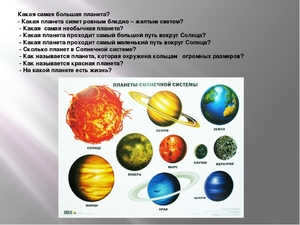

The waves on Jupiter have various characteristics. For instance, they can manifest as intense bursts, particularly when one of its moons traverses certain regions of its magnetic field. Alternatively, there can be uninterrupted radiations at the poles that contain high levels of radiation.
In 1979, Jupiter’s rings became easily visible when they were spotted by a NASA spacecraft. However, their origins remained unknown at the time.
Subsequent studies by spacecraft shed more light on the subject. Scientists now believe that these bands and circular formations were formed due to meteorite activity on the nearby satellites of Jupiter.
400 years ago, astronomers caught sight of the planet Jupiter. It was a time when telescopes were just starting to emerge, allowing people to observe this celestial body. Jupiter stands out due to its immense size and proportions. It holds the record for being the largest planet in terms of volume, mass, and surface area in our solar system.
Interesting Facts About Jupiter: The Largest Planet in the Solar System
By the way, it is worth mentioning that there exist planets that are theoretically 15 times larger than Jupiter. However, in reality, Jupiter holds the title as the largest planet in our solar system. The Romans named this planet Jupiter in honor of their supreme deity.
Jupiter is classified as one of the largest gas giants in our solar system. It is comprised of an interior layer and an atmospheric layer. The atmosphere is predominantly composed of 90% hydrogen and 10% helium. Additionally, it contains traces of methane, silicon, and ammonia. Small amounts of carbon, oxygen, neon, and phosphine are also present.
The interior of Jupiter consists of dense materials. The nucleus, which is a combination of liquid hydrogen and helium, is surrounded by an outer layer of molecular hydrogen. While it is not yet confirmed, some scientists speculate that the core of Jupiter may be rocky.
Only 20 years ago, scientists began to question the nature of Jupiter’s nucleus. There were speculations that it could have a mass ranging from 12 to 45 times that of Earth and make up about 4 to 14% of Jupiter’s total mass. As one gets closer to the core, the temperature and pressure increase significantly. Near the core, the temperature reaches an astonishing 35,700 degrees and the pressure reaches about 4,000 Gpa. In contrast, at the very surface of Jupiter, the temperature is a relatively mild 67 degrees and the pressure is around 10 BAR.
Jupiter also boasts a family of 67 moons. Many of these moons were discovered by Galileo Galilei centuries ago. The four largest moons, known as the Galilean moons, are particularly notable:
- Io (known for its active volcanoes)
- Europa (believed to have a subsurface ocean)
- Ganymede (the largest moon in the solar system)
- Callisto (also believed to have a subsurface ocean)
In addition to its fascinating moons, Jupiter is also known for its spectacular polar lights, which can be observed near the north and south poles.
The top 8 planets: exploring the largest planet in the solar system
- Mercury, the smallest planet in the solar system, holds the distinction of being the closest planet to the Sun. Unlike other planets, Mercury does not experience seasons due to its perpendicular axis of rotation in relation to the Sun. Its rocky surface is reminiscent of the Moon, covered with craters and devoid of atmosphere. As the eighth planet, Mercury is a fascinating celestial body to study;
- Mars, on the other hand, takes the fourth spot from the Sun. Similar to Mercury, Mars is characterized by its rocky terrain. This planet has been a subject of exploration by Earth spacecraft, with ongoing missions and rovers currently operating on its surface. With an average temperature of -153 degrees, Mars secures the seventh position among the top 8 planets;
- Venus, also known as Earth’s sister, is located closer to the Sun than Earth, making it less significant in comparison. Its average temperature is a scorching +470 degrees, and it relies on carbon dioxide instead of oxygen. Venus holds the title of the 6th largest planet;
- Earth, the third furthest planet from the Sun, is the only known planet to sustain life. With 70% of its surface covered in water, it is a unique and vital planet. Earth ranks as the 5th largest planet;
- Neptune, the most distant of the largest planets, surpasses Earth in both weight and diameter, being 17 times heavier. Astronomers first calculated the existence of Neptune in 1846, and later observed it through telescopes. Neptune holds the 4th place among the largest planets;
- Uranus is the third largest planet among the big ones. It has an average temperature of -220 degrees. It derives its name from an ancient Greek deity, rather than a Roman deity like most of the other planets. It is orbited by 27 satellites. This planet holds the third position in terms of size.
- Saturn – this planet also ranks among the largest. Saturn has the highest number of satellites, approximately 62. This planet holds the second position.
- Jupiter is the largest planet in our solar system. It is a gas giant with an average temperature of around -140 degrees. Jupiter has numerous satellites, some of the most well-known being Europa, Io, Ganymede, and Callisto. These satellites can be observed using binoculars.
Classification
First and foremost, let’s examine the fundamental principle behind the categorization of planets in astronomy. The solar system is divided by the Main into two distinct sections. The initial section encompasses Mercury, Venus, Earth, and Mars. Jupiter, Saturn, Uranus, and Neptune make up the subsequent section, followed by Pluto and the Kuiper Belt. The first four planets belong to the Earth group. Apart from their positioning, they are characterized by their composition: comprised of metal and silicon compounds, with a core, mantle, and crust. Earth holds the distinction of being the largest planet in this particular group within the solar system.
The group of planets known as the gas giants are located beyond the Asteroid Belt. These planets, as their name suggests, are incredibly large, surpassing the size of the planets in the Earth group. However, their most significant distinction lies in the composition of the material that comprises these celestial bodies. These gas giants are composed of a combination of gases including hydrogen, helium, ammonia, and methane. It is this unique composition that sets these giants apart from Earth and other similar planets.
Ninth
In 2006, Pluto was “downgraded” to a dwarf planet and classified as part of the Kuiper belt, a region of the solar system that is located far enough away from Earth. According to scientists, Pluto fails to meet one of the criteria for being classified as a planet: it lacks the necessary mass to clear its orbit of other objects. However, its composition is believed to be similar to that of other bodies in the Kuiper belt, consisting of frozen methane and nitrogen.
Currently, there are only eight recognized planets in our solar system, along with a few dwarf planets that will never attain full planetary status.
Which planet is the biggest in our solar system?
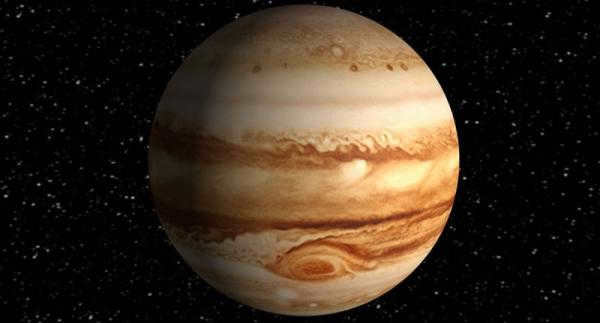
Undoubtedly, the gas giants should be explored to find the most remarkable one. Nevertheless, every student today is aware of the answer to the query “which planet in the solar system is the largest”. It is Jupiter, the initial splendid giant located beyond the Main Asteroid Belt, which likely played a crucial part in the genesis of life on our planet by shielding it from meteorites.
The immense magnitude of Jupiter
Once again, comprehending the colossal size of Jupiter proves to be an exceedingly challenging task, especially when attempting to fathom an object that is 1300 times larger than Earth. Analogies come to the rescue: Jupiter, a planet within our solar system, is as vast as a pea. The tempestuous storm transpiring in the atmosphere of this colossal celestial body is so immense that it could engulf all the planets in the Earth group, with the exception of Mercury, when combined.
Not only is the size of Jupiter awe-inspiring, but its rotational speed is also mind-boggling. It completes one full revolution around its axis in a mere 10 hours, hurtling through space at a velocity of 45,300 km/h. Simultaneously, this colossal entity orbits the Sun in a span of 12 years. This is quite remarkable, considering its significant distance from the Sun, which is five times farther away than Earth.
Ephemeral surface
After discovering that Jupiter, the largest planet in the solar system, is surrounded by a 9:1 atmosphere of hydrogen and helium, many schoolchildren wondered about the possibility of walking or traveling on its surface. However, they soon learned that setting foot on Jupiter’s surface is an impossibility. The planet’s atmosphere smoothly transitions into liquid hydrogen, with no clear boundary between the two. The only way to mark this transition is conventionally by the pressure level.
Clouds and Spots
Upon careful examination of the photographs of Jupiter, one can easily observe the planet’s distinct visual characteristics. The upper atmosphere showcases a recognizable striped pattern composed of stable clouds: zones of lighter color interspersed with reddish-brown belts. These clouds are accompanied by powerful atmospheric flows, known as jets in scientific terminology, which are sandwiched between them. These jets are, in fact, incredibly strong winds. They can either move in the same direction as the planet’s motion or in the opposite direction. The clouds, both light and dark, as well as the jets, are conventionally labeled as geographical features on the gas giant’s equally conventional surface.
Jupiter’s surface is known for a unique feature called the Great Red Spot. This phenomenon sets the planet apart from other celestial bodies in the solar system due to its brightness and longevity. Scientists theorize that the Great Red Spot is a massive atmospheric storm that has been consistently present for at least 350 years. While it moves in longitude, it remains fixed in latitude. Additionally, the spot experiences fluctuations in size, expanding to enormous proportions before shrinking by half.
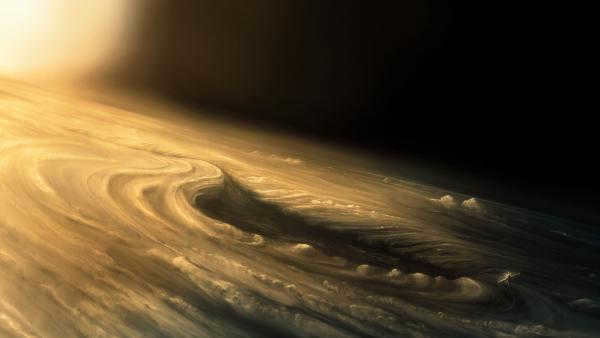
Research conducted on spacecraft has confirmed the hypothesis proposed by astronomers: the Great Red Spot is an enormous anticyclone that rotates in a counterclockwise direction, completing one revolution every six days.
The closest giant
Jupiter is host to numerous fascinating phenomena, but it is worth mentioning its “companion” – the second largest planet in our solar system, Saturn. It is nearly impossible to overlook Saturn with its distinctive rings, making it instantly recognizable among all other celestial objects. Interestingly, all gas giants possess such formations, as well as their own set of satellites, which are renowned for their awe-inspiring beauty. These rings are primarily composed of ice particles with a small amount of heavy elements and dust.
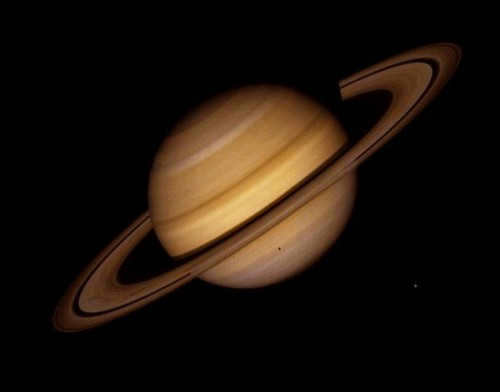
Saturn has a similar composition to Jupiter, consisting of hydrogen, helium, methane, ammonia, and various impurities. However, unlike Jupiter, Saturn’s surface is not as stable and experiences much stronger winds.
The frozen titans
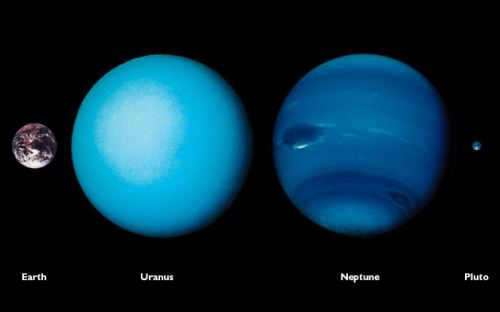
Saturn is followed by Uranus, and then Neptune. Astronomers classify them as a distinct subgroup because they lack the metallic hydrogen feature found in Jupiter and Saturn, but instead have a significant amount of ice in high-temperature forms. One of the most remarkable characteristics of Uranus is its tilted axis, which gives the appearance of the planet lying on its side. As a result, the Sun primarily illuminates the North Pole and South Pole rather than the equatorial zone.
Neptune is known for its incredibly strong winds. Its surface exhibits a formation similar to the Great Red Spot on Jupiter, which is referred to as the Great Dark Spot.
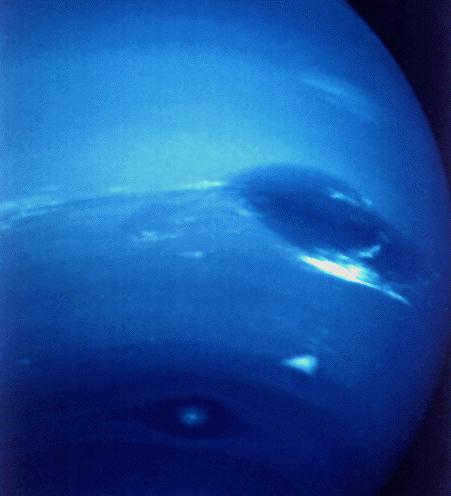
Therefore, the response to the inquiry “what is the biggest planet in the solar system” is straightforward: it is Jupiter. Behind that concise word, it possesses an immense mass, it boasts the most powerful winds, and it features the Great Red Spot. Saturn, Uranus, and Neptune follow suit, each possessing their own unique characteristics, and modern astronomy has unveiled intriguing facts about each one. The entirety of the solar system, encompassing all its objects and structures, even when compared to the colossal Jupiter, is vast. Moreover, this particular sector of the Universe remains largely enigmatic to us. An abundance of information, including that pertaining to gas giants, still eludes explanation, necessitating the revision of certain theories. It is safe to assume that numerous additional revelations lie in store, both regarding the largest planets in the system and those of more modest proportions.
A planet is a celestial body that orbits around the Sun and is part of the Solar System along with the other planets. The word “planet” originates from the Greek term for “wanderer”. In ancient times, before the invention of telescopes, planets, similar to stars, were perceived as objects that moved across the sky. The advancement of technology has significantly enhanced scientists’ understanding of planets, thanks to the use of spacecraft and improved observations from Earth. Our solar system consists of eight well-known planets, although there was originally nine when Pluto was discovered in the 1930s. However, in 2006, astronomers established an official definition of a planet, which Pluto did not meet, resulting in its reclassification as a dwarf planet.
The solar system’s largest planets are:
Jupiter
Jupiter, the largest among the eight planets that orbit the Sun, has a radius of 69,911 kilometers. Its immense size allows it to contain all of the other seven planets within its boundaries. Positioned as the fifth planet from the Sun, it is named after the king of the Roman gods. The planet’s atmosphere consists primarily of hydrogen and helium gases. Jupiter’s surface is composed of an ocean of liquid hydrogen.
Jupiter boasts a variety of clouds, including white, yellow, thick red, and brown. These clouds move in the opposite direction of the planet’s rotation, rotating at high speeds. One of Jupiter’s most famous features is the Great Red Spot, a vortex that moves parallel to the planet’s equator and is larger than Earth.
Saturn
Saturn is the sixth planet from the Sun and the second-largest in the Solar System, after Jupiter. It is a gas giant with an average radius about nine times that of Earth. Saturn is known for its beautiful rings made up of ice particles, rocks, and dust. The planet has a pale yellow hue due to the presence of ammonia crystals in its upper atmosphere. Saturn has more than 60 moons, the largest of which is Titan. The planet is named after the Roman god of agriculture and wealth. It was first observed by Galileo Galilei in 1610. Saturn is a popular subject of study for astronomers and has been visited by several space probes, including the Cassini-Huygens mission.
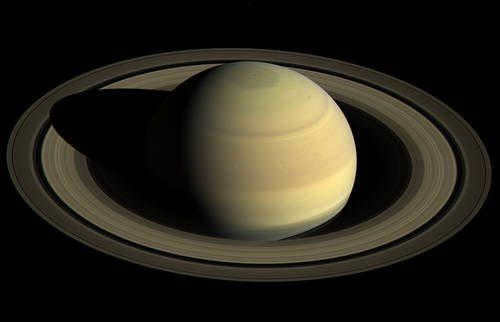
Saturn, the second largest planet in the solar system, has a radius of 58,282 km (excluding the rings). It is the sixth planet and can be easily seen from Earth with the naked eye. The discovery of Saturn is attributed to multiple astronomers and it was named after the ancient Roman god of agriculture and wealth. Saturn has a rotation period of 10 hours and 34 minutes and takes approximately 29.4 Earth years to orbit the Sun. The planet’s atmosphere is divided into three layers: the first layer primarily consists of ammonia ice, the second layer contains water ice, and the third layer is composed of a mixture of hydrogen and sulfur.
Saturn is primarily made up of hydrogen. It boasts a set of delicate and expansive rings composed of icy particles and small specks of carbonaceous dust. Scientists speculate that these particles are the leftovers from asteroids, satellites, and comets that disintegrated in close proximity to Saturn. Positioned 1,424,600,000 kilometers away from the Sun, Saturn is accompanied by 62 satellites, making it the most oblate planet in our solar system. This unique shape is primarily attributed to its low density and rapid rotation.
Uranus
can be paraphrased as follows:
The planet Uranus
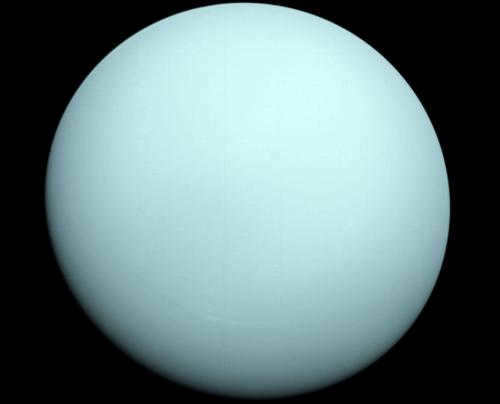
The planet Neptune
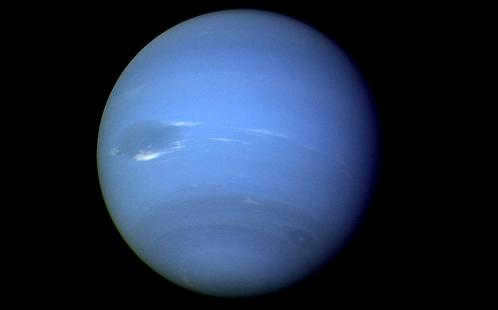
Out of all the planets we know, Neptune holds the record for being the farthest from the Sun. It was first observed on September 23, 1846, by Johann Gall. The discovery was made possible thanks to the initial data provided by French astronomer Urban Le Verrier and another British astronomer, John Couch Adams. Neptune completes one full orbit around the Sun every 164.79 Earth years and is accompanied by 14 moons and five faint rings.
Neptune, which is primarily composed of hydrogen, helium, and methane, is a gas planet. Due to the absorption of red light by methane in its atmosphere, Neptune appears blue in color. The planet derives its name from Roman mythology, in which Neptune was the god of the sea. The core of the planet is predominantly composed of rock. A powerful storm known as the Great Dark Spot is currently active on Neptune. The planet experiences a highly active climate, characterized by violent storms and fast-moving winds that encircle the planet. In 1989, the Voyager 2 spacecraft made a close encounter with Neptune, marking the only visit of a spacecraft to the planet.
Other celestial bodies and the dwarf planet Pluto
Ranking in terms of size, the planets are as follows: Earth, with a radius of 6,371 km, Venus, with a radius of 6,052 km, Mars, with a radius of 3,390 km, and Mercury, with a radius of 2,440 km. It is worth noting that the former ninth planet, Pluto, is not included in this list. In 2006, astronomers adopted a new definition of the term “planet,” which resulted in the reclassification of Pluto as a dwarf planet.
If you happen to come across an error, kindly highlight the specific text and press Ctrl+Enter.
Our solar system is an incredible place. It not only houses eight planets, but also includes numerous dwarf planets, hundreds of moons, and thousands of stars and asteroids. While it is commonly believed that Pluto’s orbit marks the edge of the solar system, this notion couldn’t be further from the truth.
In the 20th century, scientists not only proposed that the expanse of the solar system spans nearly 2 light-years – a staggering 125,000 times the distance from the Sun to Earth – but also that there exist countless objects beyond Pluto. Just imagine the sheer magnitude of these neighboring objects!
Here, we present a compilation of the 10 largest planets in the Solar System: a ranking of the colossal giants of the Universe.
10. Erida, 2340 km
Erida is a celestial body with a diameter of 2340 kilometers. It is the tenth largest object in its region. Erida’s size makes it an important part of the astronomical community’s research. Scientists are constantly studying Erida to learn more about its composition, structure, and history. The information gathered from these studies helps us better understand the universe and our place in it.
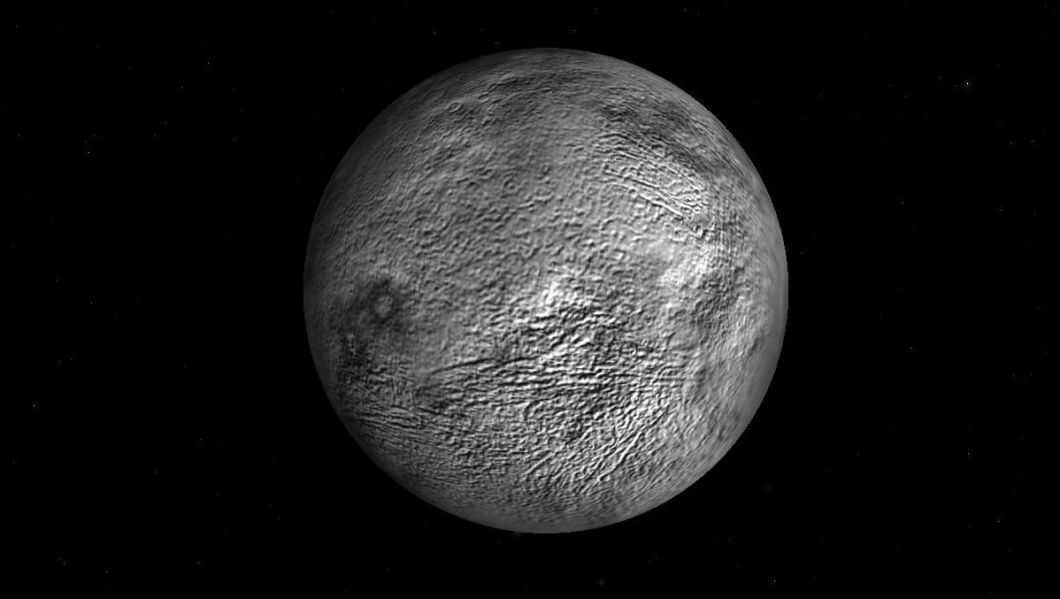
Erida is one of the largest dwarf planets in our solar system. It has a similar size to Pluto, but is located three times further away from the Sun.
When Erida was initially discovered in 2005, astronomers believed it to be much larger than Pluto, and even debated whether it should be classified as the 10th planet in our solar system.
However, upon further investigation, it was determined that Erida is a relatively small planet. This finding led to the reclassification of Pluto as a dwarf planet in 2006, a decision that remains controversial to this day. This controversy adds significance to the name Erida.
“Erida is the Greek goddess of strife,” stated astronomer Mike Brown, a member of the Eris research team, in a statement from the California Institute of Technology.
9. Pluto, with a diameter of 2374 kilometers
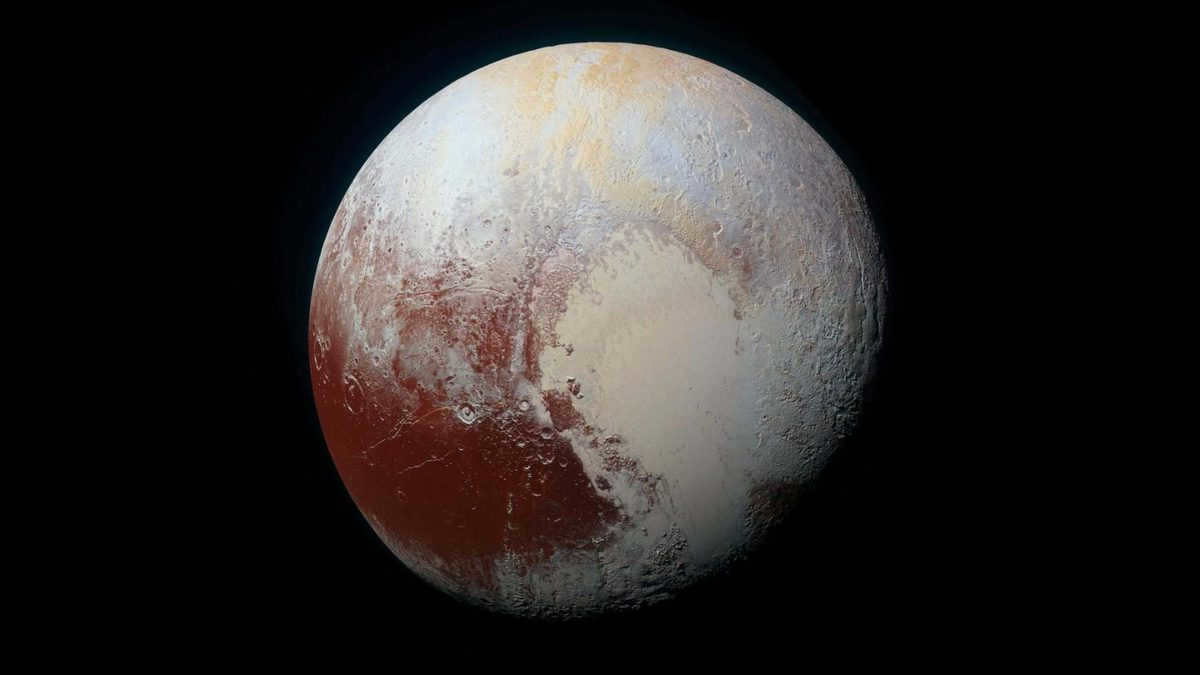
Pluto is the largest celestial body in a group of objects that revolve around a disk-shaped region beyond the orbit of Neptune known as the Kuiper Belt. This distant area is home to numerous small icy worlds that were formed during the early stages of our solar system approximately 4.5 billion years ago.
Bearing the name of a king from Roman mythology who ruled the underworld, Pluto has become a subject of controversy within the astronomical community and among space enthusiasts worldwide. In a divisive decision made in 2006, Pluto was formally reclassified and no longer holds the status of a planet, resulting in our solar system now consisting of only eight planets.
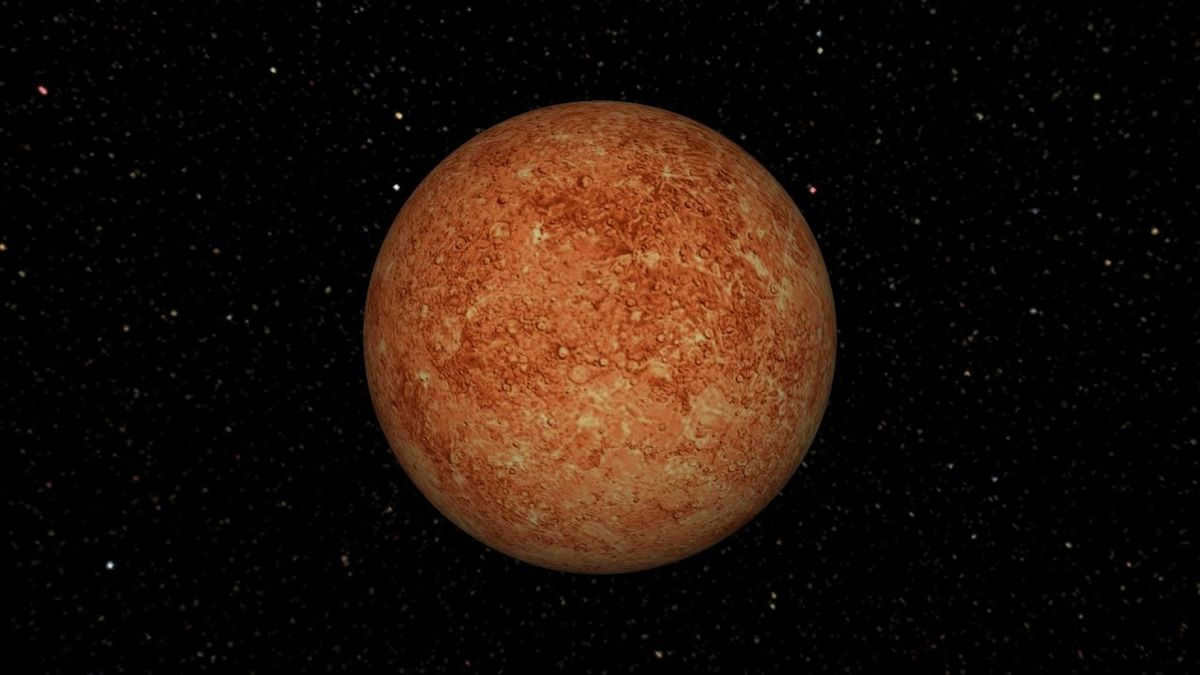
Mercury is one of the terrestrial planets, along with Venus, Earth, and Mars. It possesses a solid surface adorned with craters. The planet boasts a sparse atmosphere and lacks any natural satellites. Simplicity is Mercury’s preference.
Compared to Earth, this diminutive planet revolves at a leisurely pace, resulting in lengthy days. It takes Mercury 59 Earth days to complete one full rotation. Conversely, a year on Mercury passes swiftly, as it completes a revolution around the sun in just 88 Earth days. If you were a resident of Mercury, you would celebrate your birthday every three months!
7. Mars, measuring 6780 kilometers in diameter
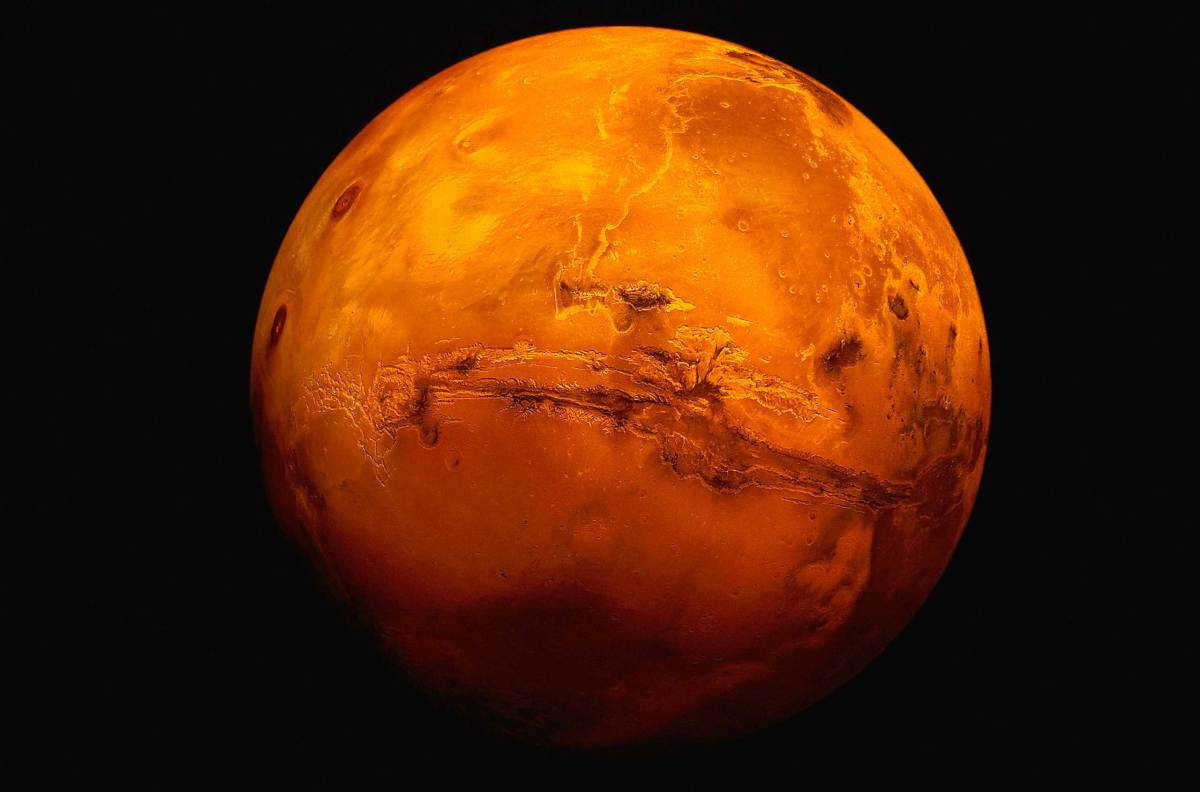
Over the past fifteen years, our knowledge of the condition and development of the largest planet in our solar system, Mars, has significantly progressed as a result of the successful missions in orbit and on the planet’s surface. These missions include the Mars Express orbiter, MER Spirit and Opportunity rovers, Mars Reconnaissance Orbiter, Phoenix lander, Curiosity rover, MAVEN orbiter, ExoMars / Trace Gas orbiter, and the recent InSight mission.
With the wealth of new data obtained from these missions, we now have the ability to address key questions about our neighboring planet. The Mars Express and MRO missions have enhanced our understanding of the planet’s geology, mineralogy, and composition on a large scale, while the MER and Curiosity rovers have provided detailed analysis of rock samples and their surrounding environment.
6. Venus, 12,103.6 kilometers
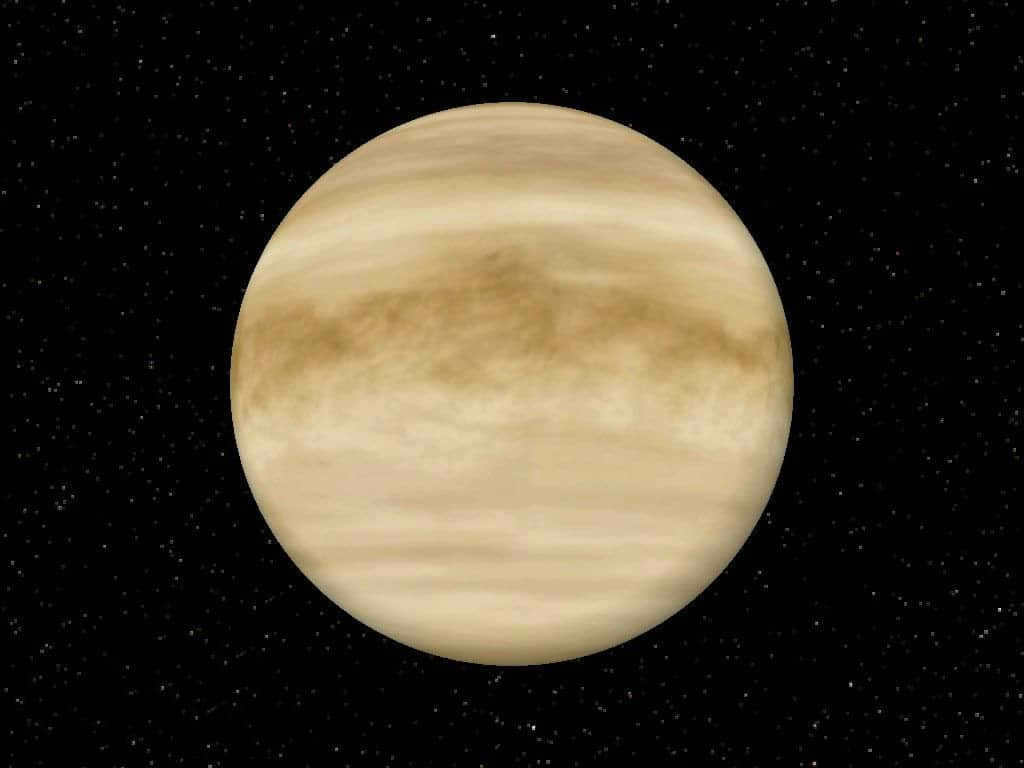
Venus was one of the celestial bodies that was known to ancient civilizations, including the Babylonians, Egyptians, and Greeks. Its movements and appearances were carefully observed and documented for centuries before the invention of advanced astronomical tools.
The Babylonians, for instance, identified Venus with the goddess Ishtar around 3000 BC and recorded its appearances. Similarly, other ancient civilizations such as China, Central America, and Egypt also made mention of Venus in their astronomical records.
Despite its proximity to Earth, the first accurate observation of Venus was made by Galileo in 1610, marking a significant milestone in our understanding of this fascinating planet.
5. Earth, measuring 12,742 kilometers in diameter
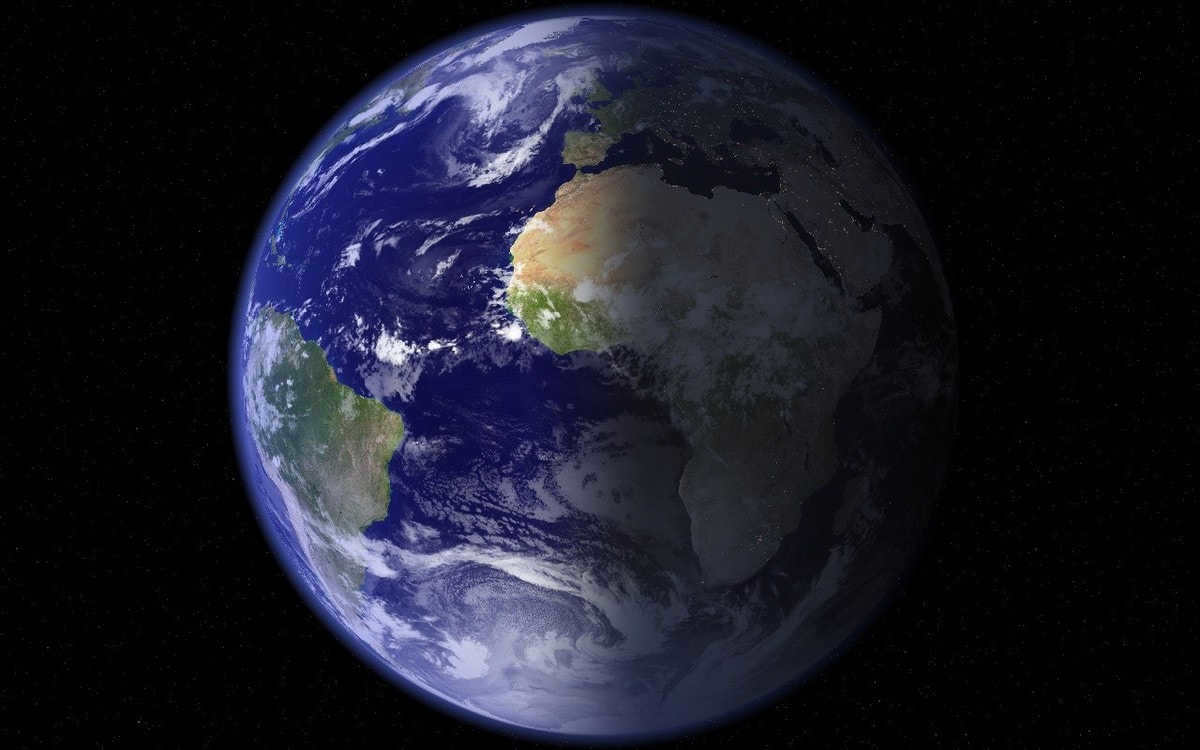
The planet known as Earth is a unique world in our solar system. It is the third planet from the Sun and is the only known place in the universe that supports life.
Even though we cannot perceive it, Earth travels in its orbit at an average speed of 18.5 miles per second. During this journey, our planet is approximately 93 million miles away from the Sun, a distance that light takes about eight minutes to travel.
Astronomers use the term “astronomical unit” (AU) to define this distance, which serves as a convenient measure in the cosmic scale.
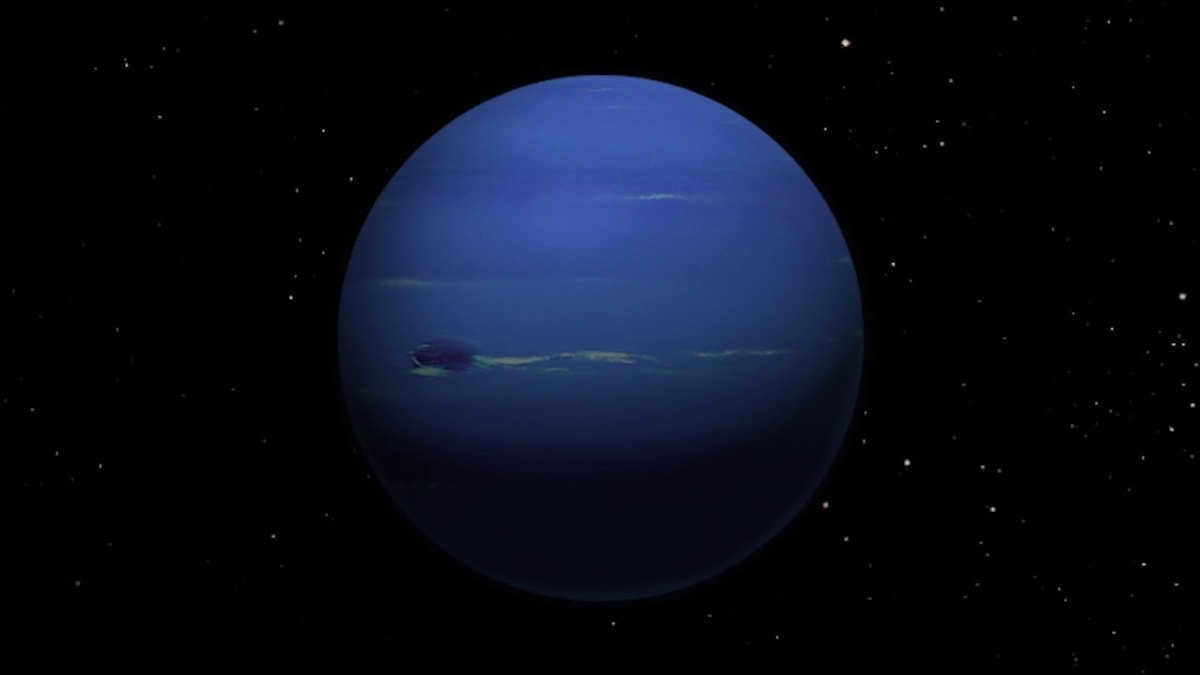
Neptune – The eighth planet from the Sun is Neptune. It was the first planet to be predicted to exist through mathematical calculations before being observed through a telescope on September 23, 1846.
Because of irregularities in the orbit of Uranus, French astronomer Alexis Bouvard proposed that the gravitational pull from another celestial body could be the cause.
Despite its significant distance from the Sun, resulting in limited sunlight, Neptune experiences winds that can reach speeds of 1,500 miles per hour (2,400 km/h), making them the fastest ever recorded in the solar system. These winds were associated with a large dark storm that was tracked by Voyager 2 in Neptune’s southern hemisphere in 1989.
3. Uranus, with a diameter of 50724 kilometers
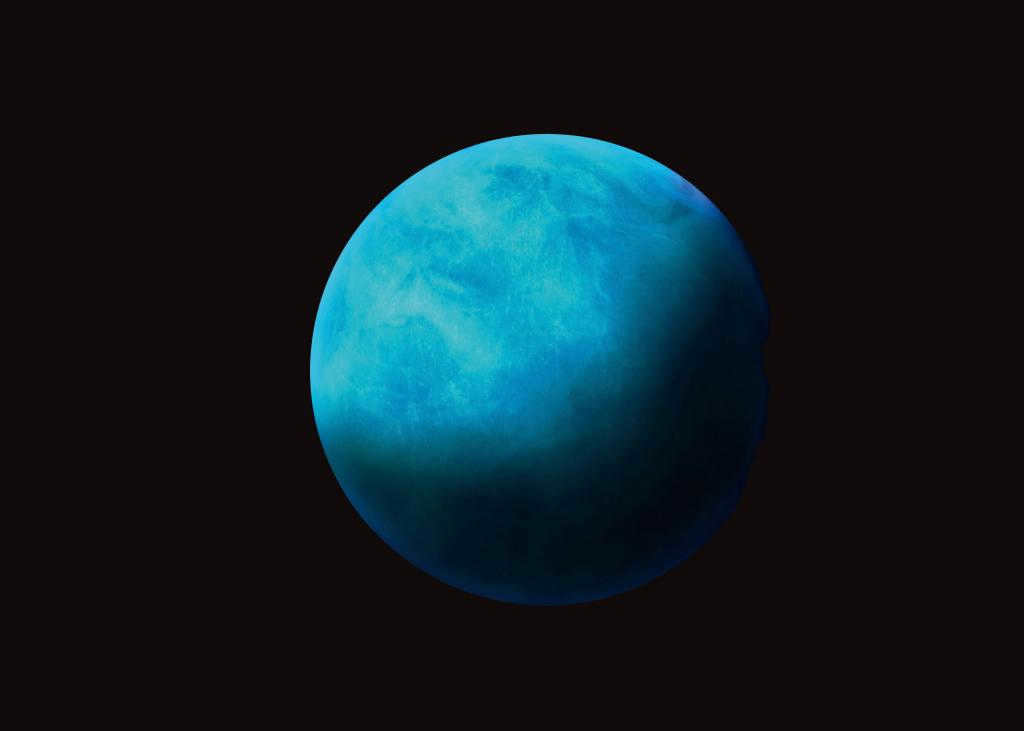
Uranus gets its blue-green hue from the presence of methane in its hydrogen-helium atmosphere. This celestial body is often referred to as an ice giant because the majority of its mass, approximately 80%, is composed of a liquid blend of water, methane, and ammonia ice.
Unlike its counterparts within the solar system, Uranus possesses a unique characteristic: it is tilted to such an extreme degree that it orbits the Sun on its side, with its rotational axis nearly aligned with the star.
The magnetic poles of the majority of planets tend to be in line with the axis of rotation, but Uranus has a unique magnetic field. Its magnetic axis is tilted at an angle of approximately 60 degrees from the planet’s axis of rotation. Consequently, Uranus possesses an asymmetric magnetic field, with the intensity of the field on the surface of the northern hemisphere being ten times stronger than on the surface of the southern hemisphere.
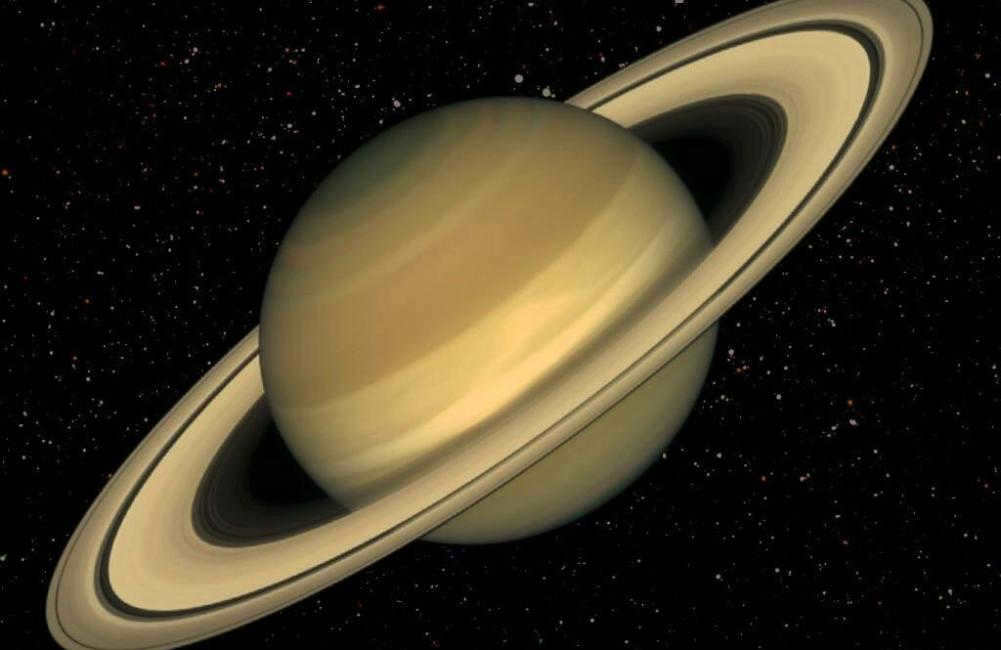
The name Saturn originates from the Roman god associated with agriculture, who is identified with the Greek god Cronus, a Titan and the father of Zeus (the Roman god Jupiter).
Being the farthest planet visible to ancient skywatchers, Saturn was also recognized for its slow movement. Located at a distance 9.5 times greater than that of Earth from the Sun, Saturn takes about 29.5 Earth years to complete one orbit around the Sun.
In 1610, the Italian astronomer Galileo became the first person to observe Saturn using a telescope. Although he noticed something peculiar about Saturn’s appearance, the limited resolution of his instrument hindered him from discerning the true nature of the planet’s rings.
1. Jupiter, with a diameter of 139,822 kilometers.
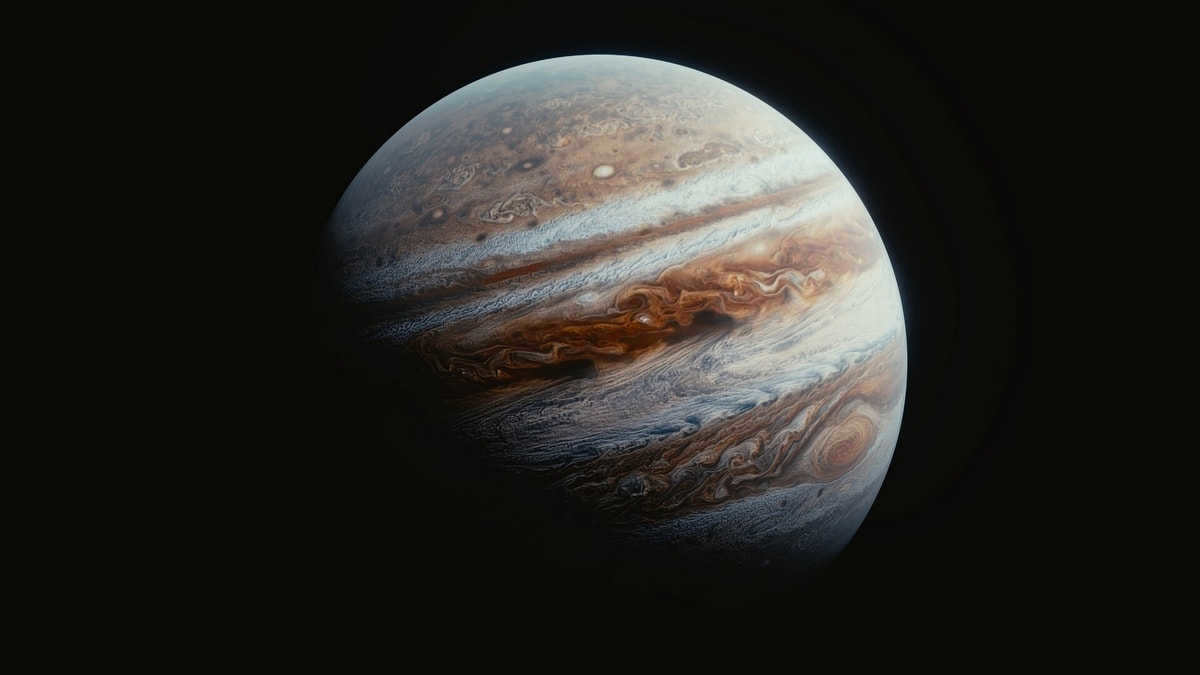
Jupiter is the largest celestial body in the solar system. It was given its name after the supreme god in Roman mythology. Similarly, the ancient Greeks named the planet after Zeus, the ruler of the Greek pantheon.
Jupiter’s mass is more than double the combined mass of all the other planets. If this colossal planet were around 80 times more massive, it would qualify as a star rather than a planet. The vast volume of Jupiter could accommodate over 1,300 Earths. To put it into perspective, if Jupiter were the size of a basketball, Earth would be the size of a grape.
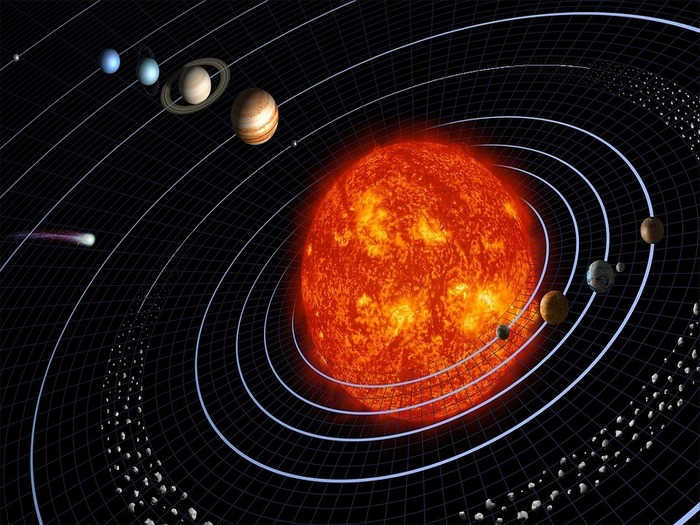
The article provides fascinating insights into the enigmas of our cosmos – specifically, the identity of the largest planet in our solar system. Join us as we explore the most awe-inspiring celestial bodies.
- 1. Planets, stars, comets – what sets them apart
- 1.1 Unique features of planets
- 2.1 Saturn
- 2.2 Uranus
- 2.3 Neptune
- 2.4 Jupiter
- 5.1 HAT-P-33 b: Exoplanet from the Gemini constellation, its characteristics
- 5.2 The colossal entity from the Hercules constellation, its traits
- 5.3 The hottest exoplanet
- 5.4 The planet that can never become a star
- 5.5 The gargantuan planet
- 5.6 The prodigious planet from the Painter constellation
What sets planets, stars, and comets apart?
When it comes to celestial objects, there are distinct differences between planets, stars, and comets.
A planet is a spherical object that orbits a star and is not a satellite of another object. It has its own gravity, which gives it a round shape, and it revolves around its own orbit. Unlike stars, planets do not have any other formations on their surface.
Another type of celestial object is a dwarf planet, which possesses all the characteristics of a regular planet but is much smaller in size.
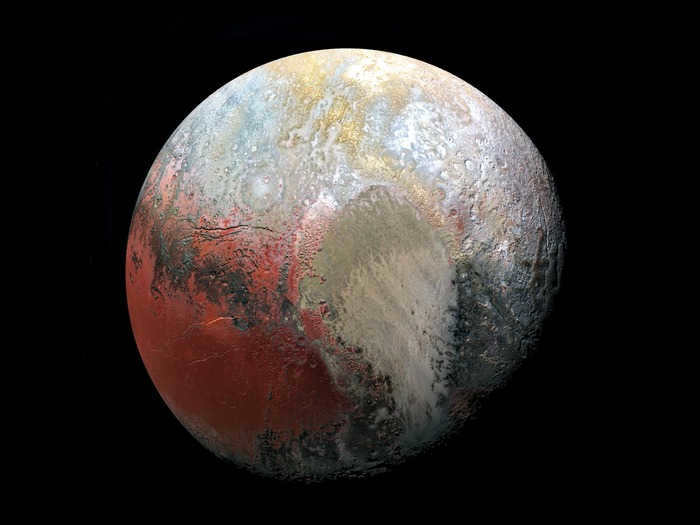

Based on this concept, scientists have come to the conclusion that Pluto fits into this category. It is classified as a dwarf planet. Although there is an ongoing debate on this matter, as Pluto is a complex celestial object with diverse landscapes. “Wanderer” is the translation of its name from Greek.
Ancient civilizations observed celestial movement without having the means to explore further.
In the 16th century, the invention of the telescope marked a new era in the study of cosmic structures. Initially, only five celestial bodies were known – Venus, Mars, Mercury, Jupiter, and Saturn. Over time, more were discovered.
Contrary to popular belief, planets do not possess the capability to emit light. The luminosity we observe is simply a reflection of the star’s radiance. Additionally, planets do not emit heat radiation. They can exist in either solid or gaseous states, forming clouds.
Each planet has its own unique exterior characteristics. For instance, Saturn is encircled by a ring.
Satellites may or may not be present around planets. There could be none or multiple satellites orbiting a planet. The temperature of a planet is influenced by its proximity to the Sun, with closer planets being hotter and vice versa.
Cosmic movements exhibit a wide range of variations. Some planets rotate at astonishing speeds, while others rotate more slowly, such as Neptune. Venus, unlike its neighboring planets, has a tilted rotation axis.
Aside from the previously mentioned entities, there exist celestial bodies such as stars, asteroids, comets, and other inanimate objects in the vast expanse of space. In ancient times, individuals observed that certain objects exhibited movement while others remained stationary, thus allowing them to differentiate between planets and stars.
In today’s era, alternative conceptions regarding this distinction have emerged. It is widely recognized that stars do not remain motionless, as they traverse the galaxy alongside their cosmic companions.
- Stars are much larger than planets in size, making their sizes incomparably different.
- Thermonuclear reactions occur in the depths of stars, while planets do not have this process.
- Planets reflect light and heat, with stars being the source of these elements.
- Stars primarily consist of light elements such as helium and hydrogen, while planets have a mixture of heavy and light elements.
- The temperature of stars is incredibly high, while planets are comparatively cold.
- Some planets have orbital motion around stars, but stars do not orbit planets.
Comets are celestial objects that follow regular orbits around the sun.
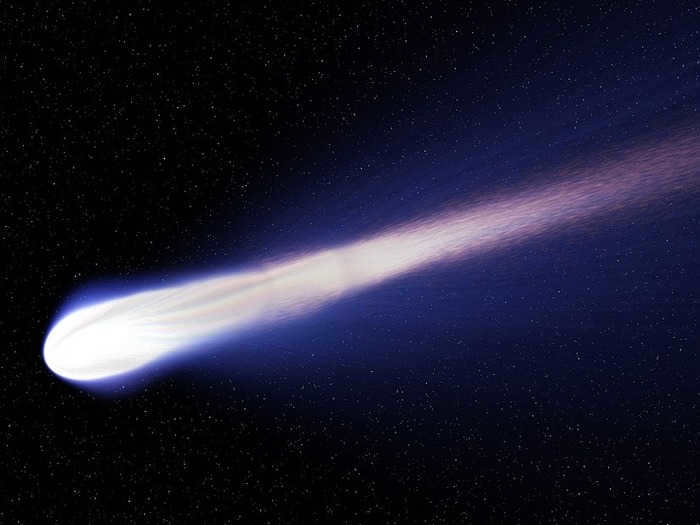

It is widely believed that massive planets undergo an expansion in size, with their outermost components being expelled into space and ultimately finding their way into the Oort cloud, which serves as the origin of comets.
Initially resembling asteroids, comets are composed of clusters of solidified gas with voids in between. As a comet approaches the sun, its tail becomes more visible and elongated due to the gas being expelled by sunlight and taking on the shape of a tail. Some comets even possess two tails, and they have been attributed to playing a role in global cataclysms of past centuries.
Exploring the Enormous Planets in our Solar System
By delving into this article, you will gain a comprehensive understanding of the vastness present in our universe, particularly when it comes to the size of planets. These colossal celestial bodies are predominantly composed of gas and dust, rather than being solid. Some notable examples include:
Interestingly, the latter two are composed of icy materials, specifically high-temperature ice. On the other hand, the former two primarily consist of gases, namely helium and hydrogen.
These magnificent giants serve a crucial role in our solar system by providing a protective barrier against asteroids and other celestial objects that venture into our space. They effectively redirect these intruders away from other planets, including Earth. It is even suggested that without these colossal planets, life as we know it would not exist on our planet. The potential devastation caused by asteroid showers could obliterate our world. Fortunately, the immense size and gravitational force of these planets act as a shield, safeguarding Earth from such catastrophic events.
The planet Saturn
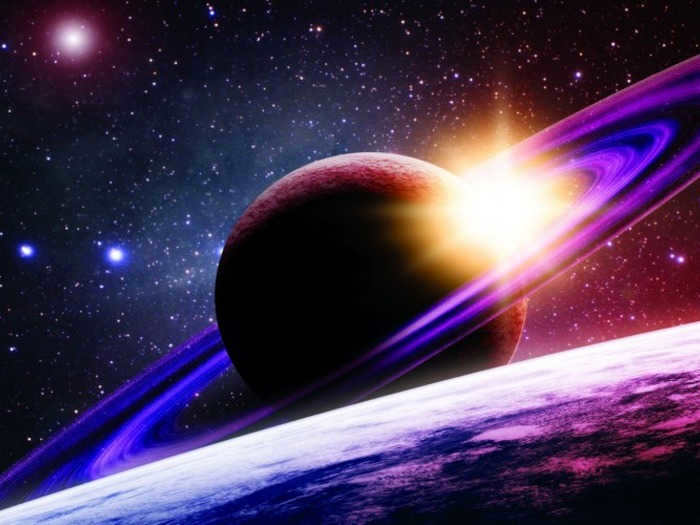
Saturn boasts a renowned ring encircling its belt and consists of clusters of frozen water particles. These particles range in size, starting from minuscule specks and culminating in substantial chunks of ice. In comparison to the vast length and volume of Saturn, the ring is relatively narrow, measuring only one kilometer in width. Additionally, Saturn is accompanied by over sixty satellites. Its radius spans 58,232 kilometers, and although its density is lower than that of Earth, Saturn does not experience Earth’s gravitational force.
Uranus: A Unique Planet in our Solar System
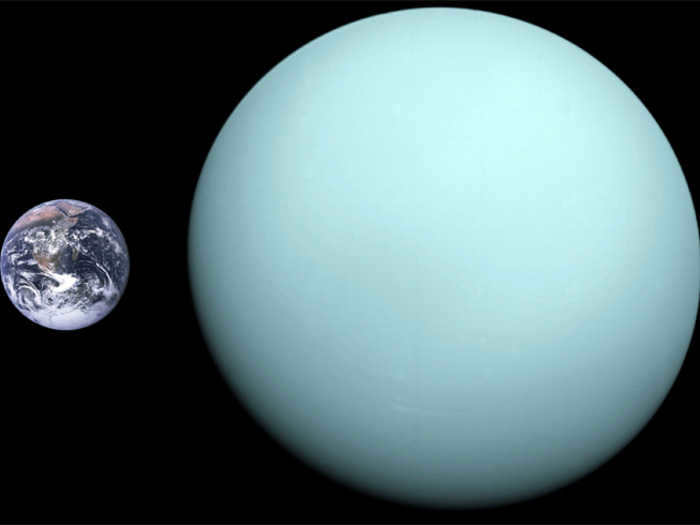
Its composition consists of helium, hydrogen, and blocks of high temperature ice. Uranus is characterized by its relatively tranquil nature, although it has experienced some significant mass movements. It holds the distinction of being the coldest place in our solar system, with temperatures reaching as low as minus 224 degrees Celsius. The duration of a single day and night on Uranus spans an astonishing 42 years. In terms of size, Uranus has a radius of 25,362 kilometers.

Situated farthest from the Sun, this celestial body is considerably larger than Earth and is alternatively referred to as an ice giant due to its low density. It boasts a radius of 24,622 kilometers.
Jupiter
The solar system’s largest planet, Jupiter is a gas giant in its own league. Its radius measures 69,911 kilometers. Some argue that this colossal planet has the potential to become a star, but its lack of sufficient mass prevents it from doing so. However, its mass is steadily increasing as it absorbs and assimilates other celestial objects such as asteroids and rocks. Scientists hypothesize that in the future, Jupiter may indeed evolve into another star within our solar system. While such systems are prevalent throughout the cosmos, multiple-star systems like ours are far less common.
| Jupiter | Neptune | Uranus | Saturn | |
| Radius, km | 69,911 | 24,622 | 25,362 | 58,232 |
| Diameter at the equator, km | 142,800 | 49,493 | 51,108 | 119,900 |
| Rotation around the Sun, years + day | 11+314 | 164 + 292 | 83 + 273 | 29 + 168 |
| Density, g/cm3 | 1.33 | 1.67 | 1.24 | 0.71 |
| Number of available satellites | 63 | 13 | 27 | 61 |
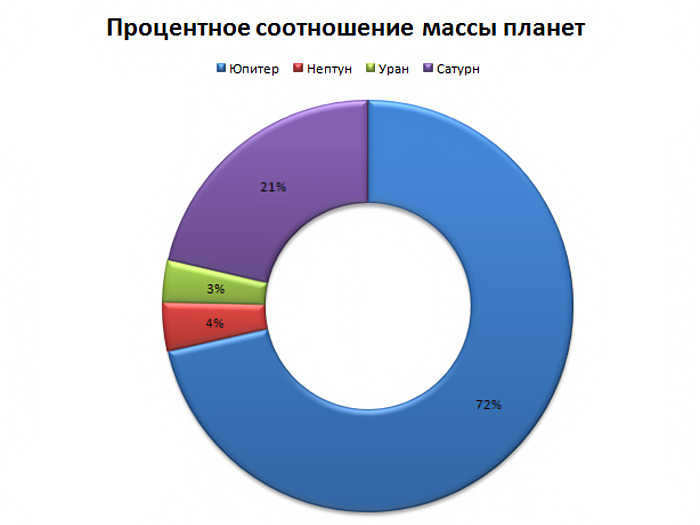
Displayed below is an illustration illustrating the relative masses of the four largest planets in our solar system.
Jupiter, the unparalleled giant of our solar system
Since our school days, we have been well aware of the identity of the largest planet in our solar system – Jupiter. Its grandeur illuminates the night sky, only surpassed by the radiance of Venus. Jupiter holds a special place in history as the planet where Galileo first discovered satellites, which subsequently aided sailors in their navigation across the vast seas. This colossal planet possesses a staggering mass of 1.9*1027kg. A mere glance at the weight distribution among the planets reveals that Earth accounts for a mere 0.22%, while Jupiter claims a staggering 71.16%. Such proportions truly highlight the immense scale of this celestial body, with an impressive diameter of 142,800 kilometers.
Jupiter, which derives its name from the Roman deity, holds great fascination for astronomers both in ancient times and today. Probing missions have been conducted to explore this planet. The following spacecraft have been utilized in relation to Jupiter: Pioneer 10,11; Voyager 1, 2; Cassini; Ulysses; Juno; New Horizons; Galileo. These instruments have aided in the tracking and examination of the planet’s radiation belt, satellites, planetary makeup, internal structure, ongoing processes, rings and their system, volcanic activity, and magnetosphere. Remarkably, they have even captured images of this colossal planet.
Jupiter exhibits a layered cloud structure, which accounts for its striped appearance.
Comprising 90% hydrogen and the remaining helium, Jupiter’s composition closely resembles that of stars. There are two prevailing theories regarding the composition of its core:
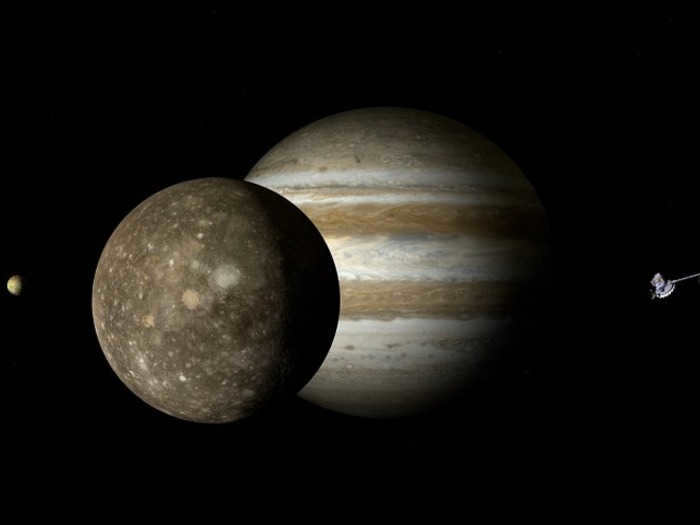
Jupiter has a total of 63 satellites orbiting around it. The largest among them is Ganymede, which was one of the four moons discovered by Galileo in the early 16th century. The other three moons are Io, Callisto, and Europa. Since then, an additional 59 satellites have been discovered, bringing the total count to 63.
Jupiter is located at a distance of approximately 778 million kilometers from the Sun. If a spacecraft were to travel to this massive planet, it would take about two years to reach it. Interestingly, scientists believe that one year on Jupiter is equivalent to 12 years on Earth.
Jupiter also has a ring system consisting of four separate rings. These rings have a width of approximately 5,000 kilometers and are composed of small rocks and dust. It is hypothesized that these rings formed from fragmented materials originating from Jupiter itself and its satellites.
Here are some fascinating pieces of information:
- Jupiter’s volume is large enough to fit 1,300 Earth-like planets;
- Jupiter has 2.5 times more mass than Earth (a hundred kilogram man would weigh 250 kilograms on Jupiter);
- The satellites that were discovered first are named after the mistresses of the god Jupiter;
- The first exploration vehicle sent to Jupiter is called Pioneer 10;
- Jupiter is highly visible in the sky due to its brightness;
- Its strong magnetic field has the ability to disable even the most powerful machines;
- Jupiter is the fastest planet in our solar system;
- It is characterized by massive storms that can last for days, and sometimes even months. These storms are accompanied by lightning and strong winds;
- The satellites orbiting Jupiter have a diameter of about 10 kilometers;
- The large red spot on Jupiter has halved in size since its discovery, and it rotates counterclockwise.
- There are animations and photos being showcased:
Animations and photos are being presented:
The biggest exoplanet
WASP-17 b is a massive exoplanet that is moving in the opposite direction of its orbit. It is situated over a thousand light-years away from our own planet. This exoplanet was first discovered in August 2009 using a powerful telescope. It resides in the Scorpius constellation. With a mass of 0.49 times that of Jupiter and a radius one and a half times larger, it is a significant celestial body. The density of this exoplanet is less than 70 times that of Earth, making it less dense than our own planet. Additionally, its orbit has an extremely elongated size.
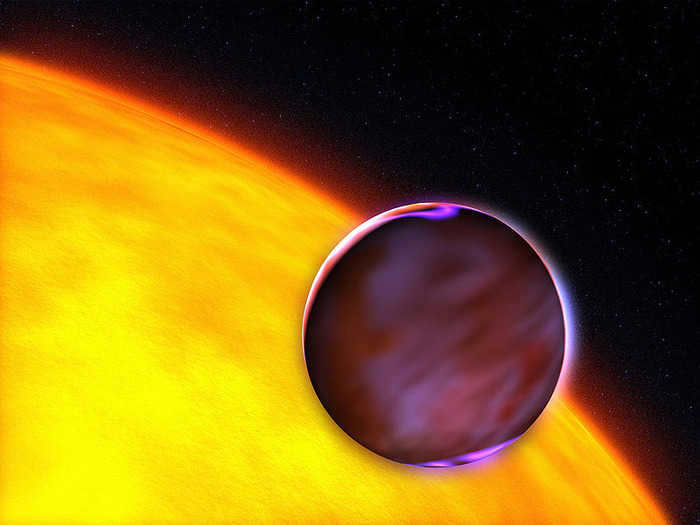
The discovery of the exoplanet 51 Pegasus b took place in October 1995. This celestial body orbits a star that shares similarities with our Sun. Situated fifty light years away from Earth, Pegasus is commonly referred to as a “hot Jupiter.” It gracefully moves through space at a staggering speed of 136 kilometers per second. The temperature on this extraordinary planet exceeds a thousand degrees. Interestingly, the distance from 51 Pegasus b to its parent star is actually shorter than the distance from our own solar system to the Sun. In terms of mass, this exoplanet is approximately half the weight of Jupiter. Initially, scientists believed that 51 Pegasus b had a solid surface, but further research revealed that it is composed of gas.
An exoplanet with unique features from the Gemini constellation, HAT-P-33 b
Situated at a distance of 1,367 light-years away from our solar system, HAT-P-33 b was first identified in June of 2011. One of the most intriguing aspects of this celestial body is its remarkable dimensions – while its mass is 76% that of Jupiter, its radius is an astonishing 80% larger than that of Jupiter. Additionally, HAT-P-33 b boasts an estimated age of approximately 2.5 billion years.
A colossal celestial body from the Hercules constellation, Distinctive Characteristics
TrES-4 A b was detected in 2006. The announcement regarding its discovery was made precisely one year later. Positioned at a distance of 1600 light years from our planet, it boasts a mass that is 92% that of Jupiter and a radius that is 71% greater. This exoplanet exhibits a hazy composition with a relaxed structure. Its proximity to the parent star accounts for its scorching temperature of 1782 Kelvin. Due to the release of some of its gaseous matter, it takes on the appearance of a comet-like tail.
The most sizzling exoid
Discovered in April 2008, WASP-12 b is an exoplanet that stands out for its extraordinary features. With a radius 74% larger than Jupiter, it is one of the largest exoplanets known to date. What makes it truly unique is its year, which is equivalent to just one Earth day. However, what truly sets WASP-12 b apart is its scorching temperature, reaching a staggering one and a half thousand degrees Celsius. This makes it the hottest exoplanet ever discovered.
Interestingly, WASP-12 b has a peculiar behavior. It transfers a part of its own mass to its parent star, leading to speculations that it may eventually disappear. Scientists have also found certain characteristics that suggest the presence of water vapor, making it a potential candidate for further investigation in the search for extraterrestrial life. Another notable feature of this exoplanet is its extremely dark surface, which adds to its mysterious allure.
1RXS J160929.1-210524 b is situated in the Scorpius constellation and is approximately 475 light-years away from our planet. It has a weight that surpasses 8.4 times the mass of Jupiter, making it a massive celestial body. Additionally, its radius is 70% larger compared to Jupiter. This exoplanet was discovered in the year 2008. The temperature on 1RXS J160929.1-210524 b reaches a scorching 1,530 degrees Celsius.
A colossal planet
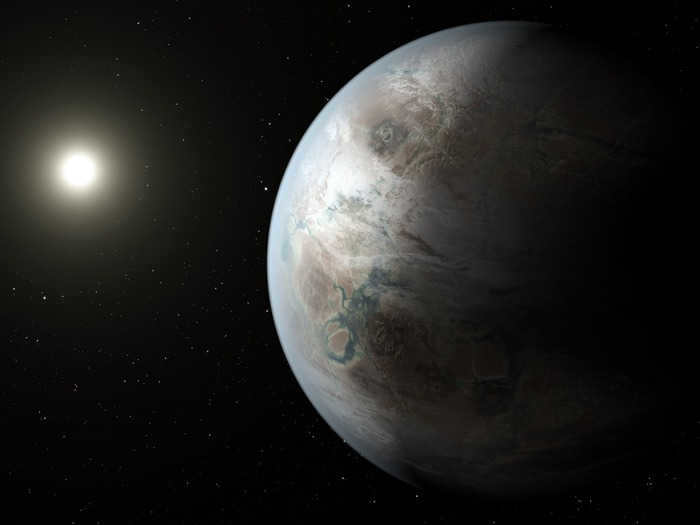
The name of the largest planet in the constellation Lyra is Kepler-12 b. This planet was first discovered in September of 2011. Kepler-12 b has a very high temperature and is known for its massive size. In fact, it has a mass that is 40% of Jupiter’s and is 70% larger in volume. Due to its inflated nature, parts of Kepler-12 b are constantly being carried away into the vastness of space. The temperature on this planet reaches an incredible 5,947 Kelvin.
A massive celestial body from the Kepler constellation
Beta Painter b is situated approximately 63 light-years away from our planet, within the confines of the same constellation. This colossal planet boasts a radius 1.63 times greater and a mass 7 times that of Jupiter. Its atmosphere is laden with dust particles, and it is distinguished by an exceedingly high temperature. The discovery of Beta Painter b occurred in November of 2008.
The expanse of the universe is replete with enigmas, secrets. Today, we endeavored to shed some light on the cosmos by elucidating the nomenclature of the largest planet within our solar system.
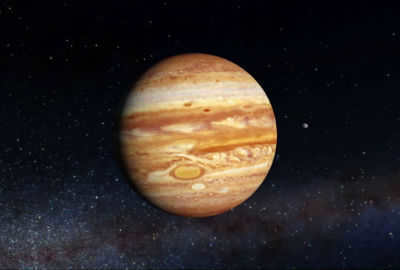
Throughout history, people have been captivated by stars, comets, asteroids, and meteorites. From ancient times, priests would pray to celestial idols, astrologers would predict fate based on the planets’ trajectories, and astronomers would meticulously study constellations.
The ancient Romans and Greeks held Jupiter in high regard. In Rome, Jupiter was seen as the embodiment of the supreme God, while the Greeks viewed him as the king of Olympus. This reverence is well-deserved, considering Jupiter’s status as the largest planet in our solar system.
A colossal celestial body
Located at the heart of our stellar system lies the most radiant star, the Sun, encircled by Uranus, Saturn, Neptune, Mercury, Mars, Earth, Venus, and Jupiter. Each of these planetary entities possesses captivating attributes, rendering them immensely captivating. However, the most substantial of them all is none other than Jupiter.
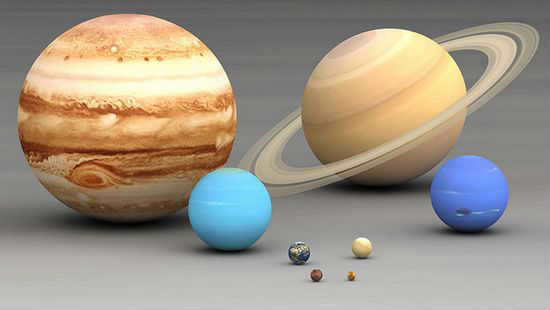
Jupiter possesses a variety of extraordinary characteristics:
- It is primarily composed of gas. Approximately 90% of its composition consists of hydrogen, while helium makes up about 10%. Additionally, traces of methane, sulfur, ammonia, and water vapor can be found;
- The extreme pressure within Jupiter’s lower atmosphere causes the gas to transform into a liquid state. Furthermore, at its core, Jupiter is comprised of metallic hydrogen;
- Jupiter’s mass is a staggering 2.5 times greater than the combined mass of all other planets within our solar system. In fact, it is 318 times heavier than the Earth;
- With a diameter of 1,39,000 kilometers, Jupiter could accommodate approximately 1300 planets the size of our Earth. It is truly mind-boggling to comprehend such an immense scale;
- The magnetic field strength of this celestial body is 20,000 times more powerful than that of Earth and stands as the largest in the entire solar system. This poses insurmountable challenges to thoroughly investigate the planet, as no aircraft can approach it closely enough;
- Jupiter boasts the fastest rotational speed among all studied planets in the galaxy. A day on Jupiter lasts a mere 10 Earth hours, which, combined with its colossal size and gaseous state, causes the planet to flatten;
- In the lower troposphere, the temperature plunges to minus 150 degrees Celsius, while the upper atmosphere soars to a scorching plus 730 degrees Celsius;
- Jupiter is renowned for its never-ending storms of astonishing force. Whirling winds race by at an astonishing speed of 640 kilometers per hour! However, the most remarkable hurricane has been observed by astronomers since the late 17th century. It is referred to as the Great Red Spot and has remained uninterrupted for over 300 years, surpassing the Earth’s diameter by three times;
- Jupiter may be millions of kilometers away from Earth, but its immense size allows it to be visible to the naked eye. Through a medium-power telescope, one can observe the giant’s surface, the Great Red Spot, rings, and satellites.
Jupiter is not just the largest planet in the Solar System, but also one of the most colossal planets known to scientists in the Universe to date.
The utmost.
Jupiter is distinctive in its own manner. It is the most immense planet in the solar system, possessing the most potent magnetic field. Jupiter is the swiftest rotating planet, exhibiting the most pronounced temperature disparity of approximately 900° Celsius.
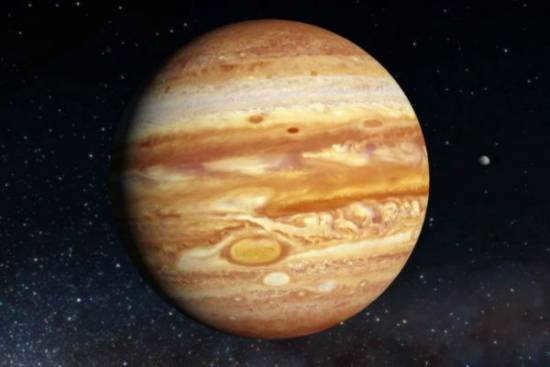
In the vast expanse of the universe, it is a challenging task to come across a celestial body that resembles Jupiter.
The moons and rings of Jupiter
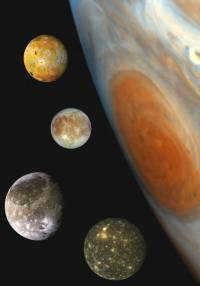
A total of 67 satellites of Jupiter have been observed. The initial 4 – Io, Europa, Callisto, and Ganymede – were identified by Galileo Galilei in 1610. They are named after Galileo Galilei in his honor. They are also the largest.
Ganymede is bigger than all known satellites, even larger than planets like Mercury and Pluto. Io is the only satellite in the universe with its own magnetic field, and it is also the most volcanically active celestial body known. The entire surface of Europa is covered in ice. Callisto has an extremely low reflectivity, which leads scientists to believe it is a massive, colorless rock.
In addition, in 1979, the Voyager spacecraft detected 3 faint rings encircling Jupiter.
Scientists worldwide overwhelmingly concur that Jupiter, along with its satellites, bears a striking resemblance to a scaled-down version of the solar system. Consequently, there is a consensus that over the course of millions of years, Jupiter has the potential to transform into a star, serving as the focal point of an entirely new system within the vast expanse of the Universe. Furthermore, it is believed that the satellites orbiting the planet could undergo a transformation, evolving into celestial bodies capable of supporting life.
Other colossal planets in the solar system
In addition to Jupiter, our solar system is home to three other massive planets:
- Saturn. Its diameter is slightly smaller than Jupiter’s, measuring 116,000 kilometers. It is 95 times more massive than Earth and exists in a gaseous state. Storms rage on its surface at speeds of up to 1,800 km/h. Saturn boasts a total of 62 satellites.
- Uranus has a diameter of 50,700 kilometers and is relatively “light,” weighing only 14 times more than Earth. It is a gaseous planet where winds whip across its surface at a furious speed of 900 km/h. Uranus completes one orbit around the sun in 84 Earth years and has a total of 27 satellites.
- Neptune is another enormous planet with a diameter of 49,200 kilometers. Like the others, it is comprised of gases and weighs 17 times more than Earth. The winds on Neptune reach staggering speeds of up to 2,100 km/h, making them the most powerful in the entire universe. Neptune is accompanied by 14 satellites.
All of the solar system’s largest planets share several common characteristics, in addition to their massive size:
- They are in a gaseous state, with hydrogen and helium as their primary components.
- They have a low density.
- Due to their high rotational velocity, these planets are slightly flattened at the poles.
- They possess a strong gravitational field.
- They have a significant number of satellites.
There is a lot of curiosity among individuals about which planet holds the title for being the largest in the vast expanse of space. In the year 2006, a group of scientists at the Lovell Observatory, located in Arizona, United States, managed to find the answer to this intriguing question. They stumbled upon a colossal planet within the Hercules system. Trying to depict its immense size using the modern Russian language would be an understatement. It is simply unimaginable. This planet is a massive entity, making even Jupiter appear minuscule in comparison. Its name, TrES-4, may be straightforward and lacking romanticism, but it accurately captures its enormity.
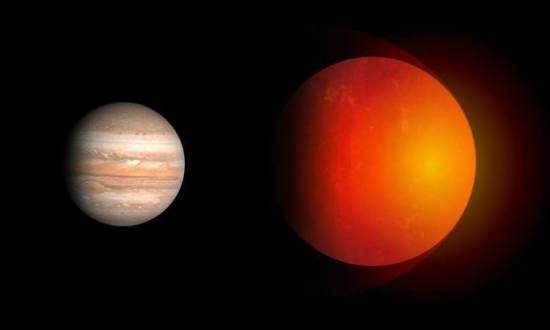
Despite having a diameter several times larger than the massive Jupiter, the newly discovered planet is actually lighter in weight, due to the extremely low density of the gaseous matter it is composed of. This fact has left scientists around the world puzzled, as they try to understand how TrES-4 can maintain its structure without dispersing into interstellar space.
This giant gas ball is incredibly hot, reaching temperatures of up to 1300°C, and bears a striking resemblance to the Sun. In fact, there was even speculation that it could be a star. However, it has since been confirmed that TrES-4 is indeed a planet. It orbits around a star known as GSC02620-00648, located 1400 light years away.

